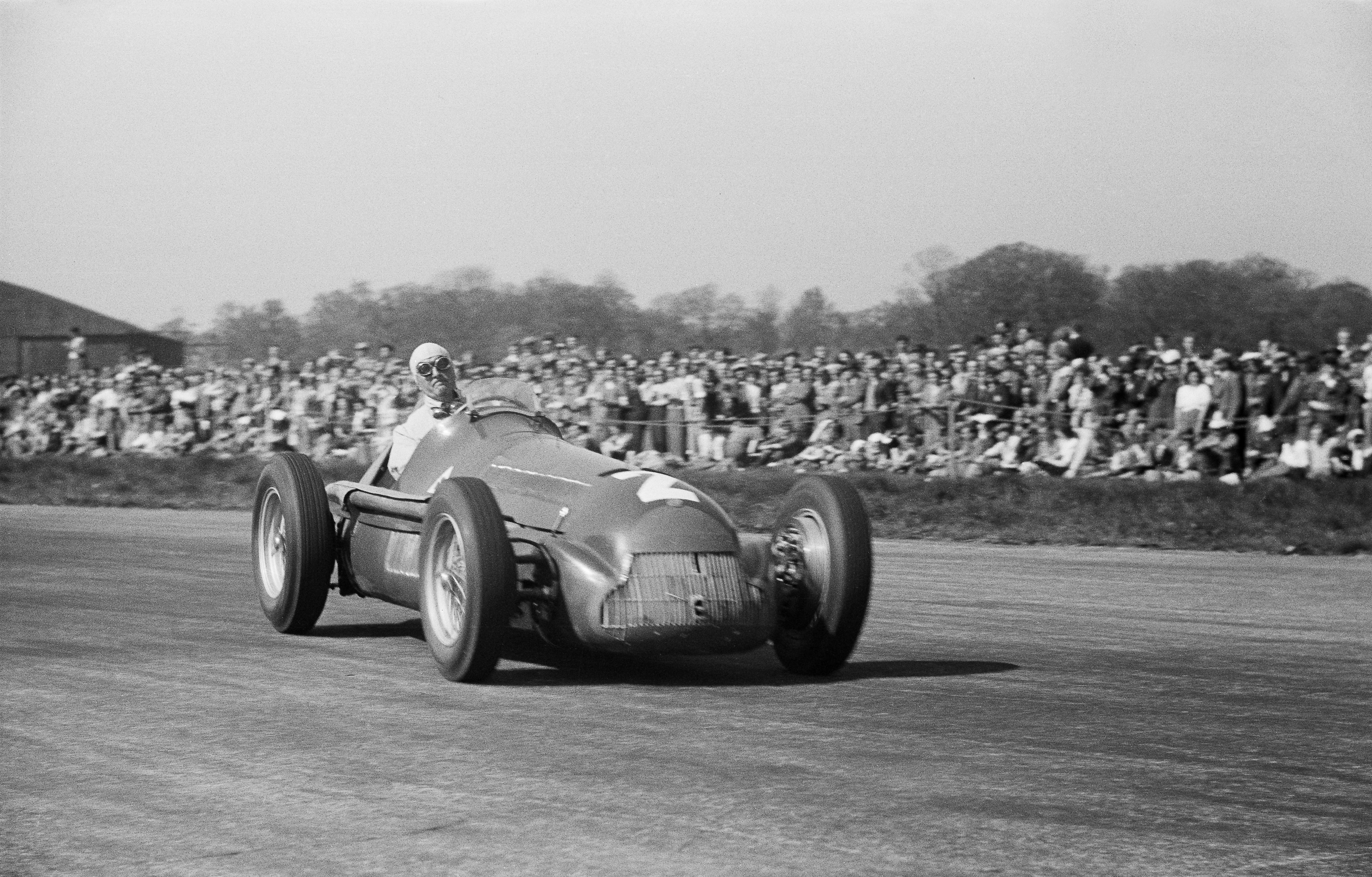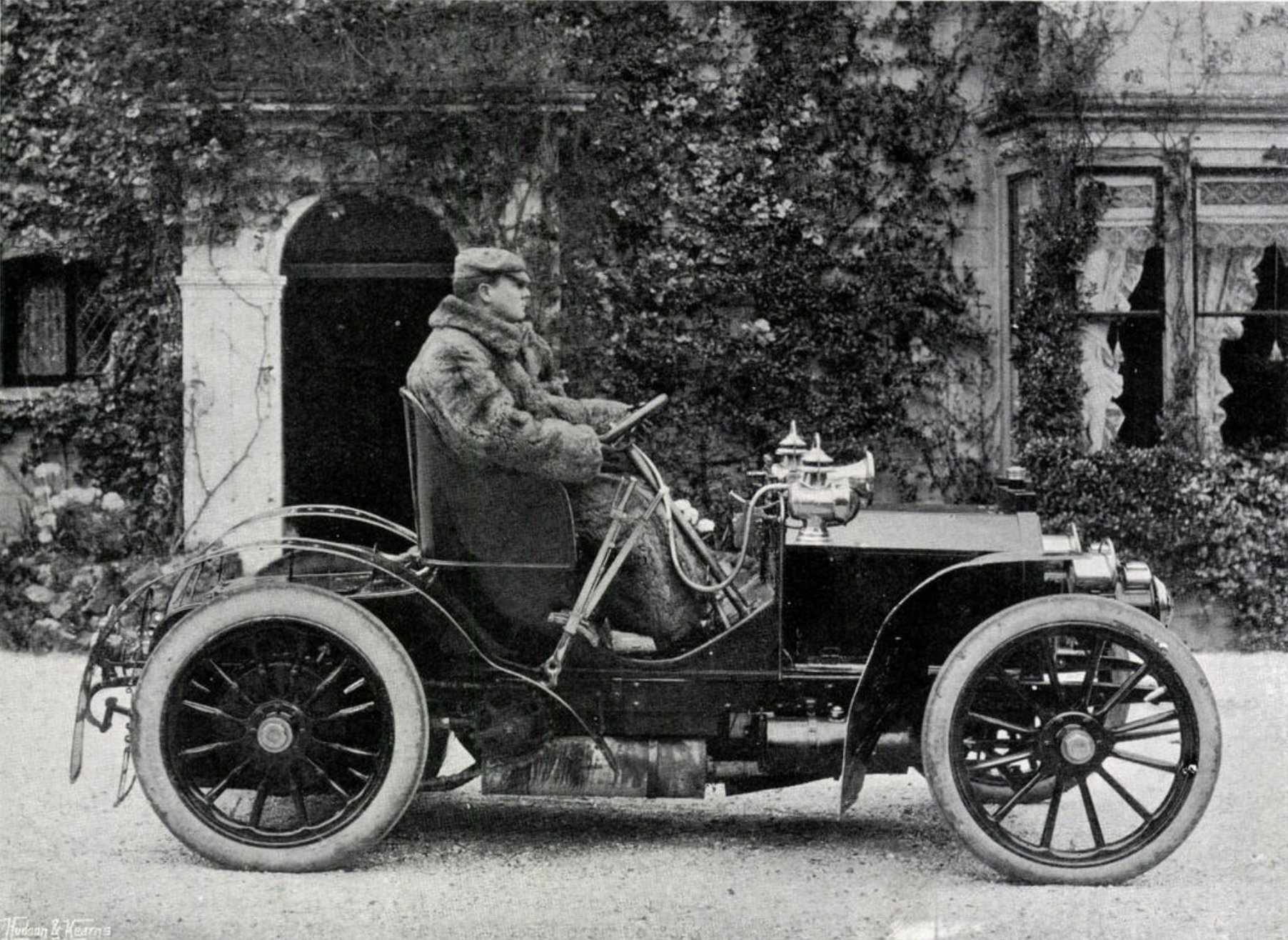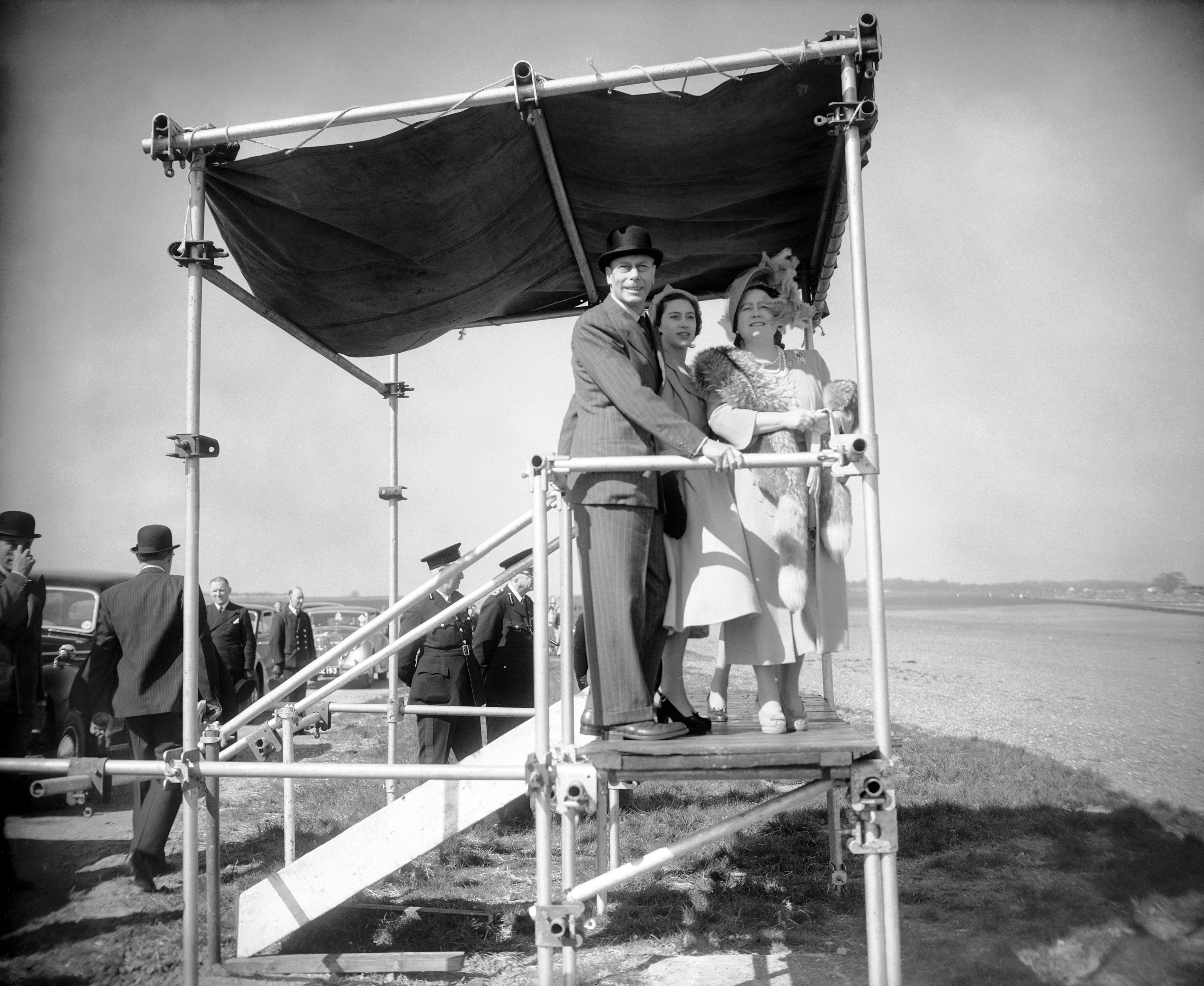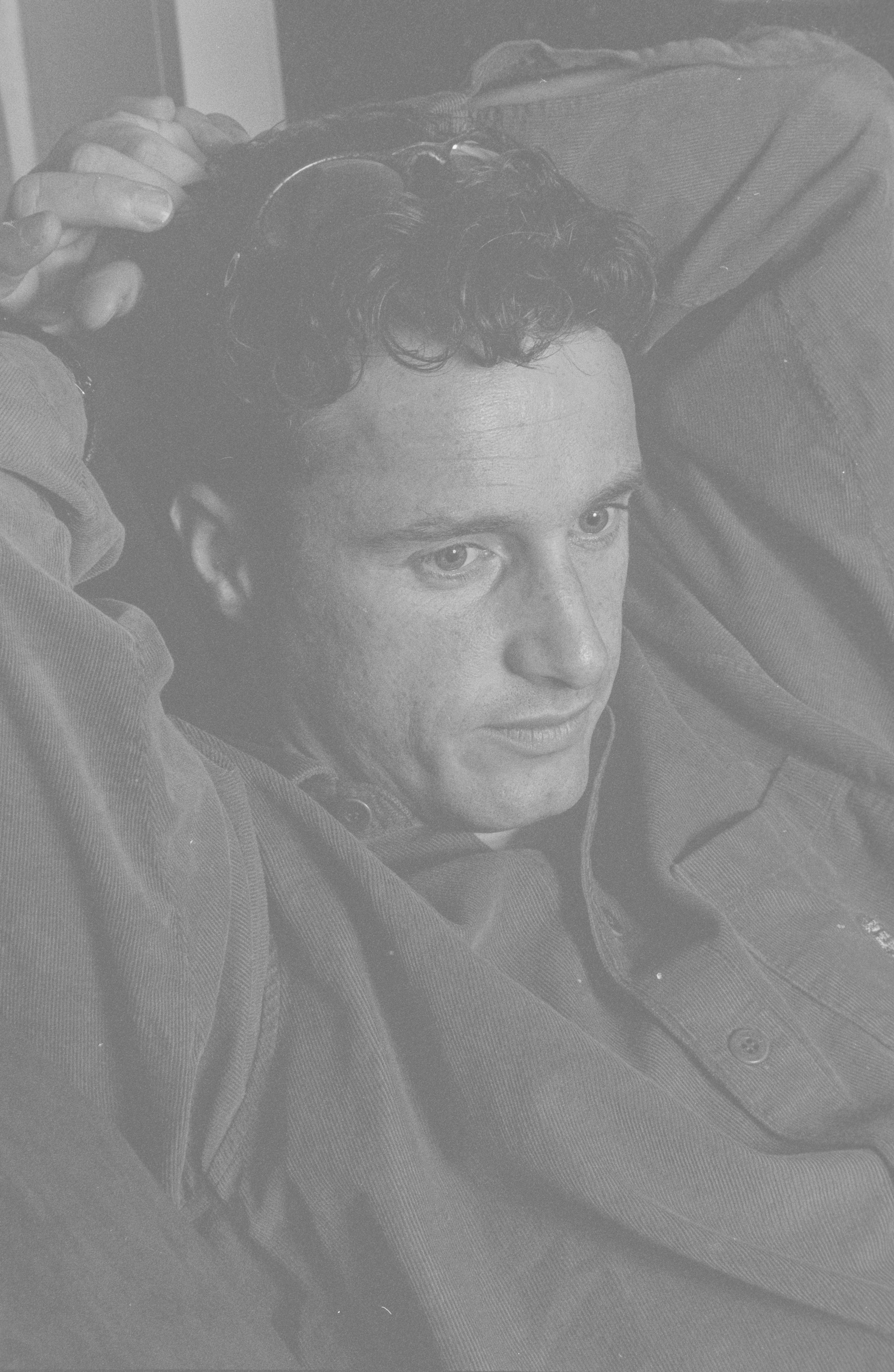‘There is probably no sport in the world which is so misunderstood’: 75 years of Formula 1 according to the Country Life archive
On the 75th anniversary of the first ever Formula 1 World Championship Grand Prix, held at Silverstone Circuit, Rosie Paterson delves into the Country Life archives to look at how the magazine once spoke about motorsport.


‘Though motor-racing undoubtedly appeals to a much larger public to-day than ever before, and the activities of certain professional drivers are well-publicised, in one form or another it has been going on since before the turn of the century.’
Read it again.
This sentence wasn’t written last week, by someone talking about Formula 1 (F1) pre- and post-Drive to Survive, the Netflix juggernaut that turned the sport into a global spectacle. This sentence, from a piece titled ‘The Lure of Motor-Racing’, was written in 1958 for Country Life, by J. Eason Gibson — who opened with the line: There is probably no sport in the world which is so misunderstood by the general public as motor-racing. The reason for this is partly that it is rarely treated at length in the Press…’ Hopefully Gibson didn’t lump this esteemed publication in with ‘the Press’ he refers to with the sort of disdain that you don’t even need to read between the lines to sense.

Crowds withstood 'inclement' weather to watch Alfred Harmsworth race a a race at Bexhill in 1902.
In fact, a cursory glance of the Country Life Archive confirms that we were talking about ‘motor-racing’ as far back as the beginning of the 20th century — and in wholly positive terms: ‘Lord Roseberry made humorous reference not long ago to the possibilities of a motor Derby,’ writes an anonymous author on May 31, 1902, continuing: ‘That such a thing would ever come to pass on the classic Downs of Epsom it is difficult to believe, for horse-racing may well be expected to continue long after the use of the noble animal as a beast of burden has altogether ceased. But there is no reason why we automobilists should not aspire to a motor Derby of our own at some other spot ; and indeed, the race-meeting at Bexhill on Whit-Monday was so encouraging as to open up vistas of great things being accomplished in the motor-racing line in this country. It was found that the track was far from perfect, but steps will at once be taken for its improvement ; and even now it is much better than the one at Deauville.’
Modest to a point — that point being the opportunity to take a dig at the French. One wonders what Mr Anonymous might make of it all today. He, and I’m hazarding a guess that he is a he, would no doubt be delighted to find that a) the Epsom Derby is still in fine fettle, b) that, to this day, only racehorses are allowed to thunder round the Grade I-listed racecourse, and c) that British motorsport did in fact find its own ‘spot’.
A post shared by ITV Anglia (@itvanglia)
A photo posted by on
In May 1950, 75 years ago, Silverstone Circuit hosted the first F1 World Championship Grand Prix; on Sunday (July 6, 2025) it will stage the British round for the 59th time. The race, which was won by Alfa Romeo’s Giuseppe Farina — who went on to become the first drivers’ champion — and attended by multiple members of the Royal Family, was a melding and formalisation of the World Manufacturers’ Championship (1925-1930) and European Drivers’ Championship (1931-1939) with the rules agreed upon in the wake of the Second World War.

King George, Queen Elizabeth and Princess Margaret keenly watch the race at Copse Corner.
Gibson, himself an amateur racer, reported on proceedings for Country Life.
Exquisite houses, the beauty of Nature, and how to get the most from your life, straight to your inbox.
He was largely positive, but did have a few, notable complaints — chiefly about the terrible traffic arrangements outside the circuit and the fact that Alfa Romeo, the state-sponsored favourites going into the race, were unlikely to hire a second Brit (driver Reg Parnell drove an Alfa Romeo 158 to third place), denying this country the opportunity to prove that we produced ‘drivers capable of holding their own with the world’s best.’
You might recognise this kind of unbridled patriotism — some would say arrogance — from his passionate plea to the masses to take the sport more seriously, eight years later, in which he also singled out B.R.M., ‘a group of industrialists anxious to see a British car capable of meeting the best Continental racing cars with some hope of success.’ (It came off the back of a thinly veiled rant about drivers who race only for the ‘considerable financial rewards’ and therefore could never ‘hope to be included in the select band of master drivers’.)
The circuit’s history came under the microscope in 1967. ‘Just inside the circuit and near to Abbey Curve [the track’s first, ultra-fast, right-hand turn),’ it said, ‘are the scattered remains of the Priory of Luffield, near which are spread the buildings of Luffield Abbey Farm, while halfway between Becket’s Corner and Chapel Curve are a few remnants of the chapel built to honour Saint Thomas à Becket.’ The chapel buildings were demolished in 1943, initially to make way for Silverstone airfield and, later on, Silverstone’s most iconic sequence of corners, Maggots, Becketts and Chapel, or turns ten to 14.
Country Life’s F1 content as a whole peaked in the 1960s. Almost all of it was supplied by, you guessed it, Gibson, who, by this point, had moved on from the ‘lure’ of motor-racing and was penning pieces on its ‘benefits’ and ‘mystique’. He was also happily reporting on the fact that Britain had finally found firm footing within the sport — and was well on its way to total domination. (Seven out of the total ten teams competing in the 2025 Championship are entirely or partially based in the UK, and ten different British drivers have hoisted the Championship cup over their heads at one point in time.)

'The Wild Man of Formula One' look unfazed when he posed for Country Life, 28 years ago.
In 1997, Country Life interviewed Eddie Irvine, four-time race winner, Championship runner-up and Michael Schumacher’s Ferrari teammate. The writer met Irvine at the Asprey store on London’s New Bond Street, to which he’d been coaxed, wearing his ‘bright red fire suit’, to unveil a new Ferrari sports car. Schumacher was also in attendance, but, according to us at least, didn’t compare to the Ulsterman who: ‘moves more naturally, striding over to the crowd, grinning easily at the cameras, hands on his hips.’
Irvine, sometimes dubbed ‘the Wild Man of Formula One’, chiefly for his daring on-track antics, a multiple car pile-up in the 1994 Brazilian Grand Prix and a 1993 argument with Ayrton Senna, who subsequently swung a punch at him, finished the interview by rightly predicting that he’d walk away from the sport in ‘three or four more years’ (Irvine retired in 2002). ‘I’ll just walk away,’ he is quoted as saying, ‘and go and see the world. I’d like to check out the States, Canada, Alaska, Iceland. There is so much out there to see. I want to die saying “I did it all”.’
The British Grand Prix takes place Sunday, July 6. Click here for some of our fun facts and figures.
The Country Life Image Archive contains more than 150,000 images documenting British culture and heritage, from 1897 to the present day. An additional 50,000 assets from the historic archive are scheduled to be added this year — with completion expected in Summer 2025. To search and purchase images directly from the Image Archive, please register here
Rosie is Country Life's Digital Content Director & Travel Editor. She joined the team in July 2014 — following a brief stint in the art world. In 2022, she edited the magazine's special Queen's Platinum Jubilee issue and coordinated Country Life's own 125 birthday celebrations. She has also been invited to judge a travel media award and chaired live discussions on the London property market, sustainability and luxury travel trends. Rosie studied Art History at university and, beyond Country Life, has written for Mr & Mrs Smith and The Gentleman's Journal, among others. The rest of the office likes to joke that she splits her time between Claridge’s, Devon and the Maldives.
